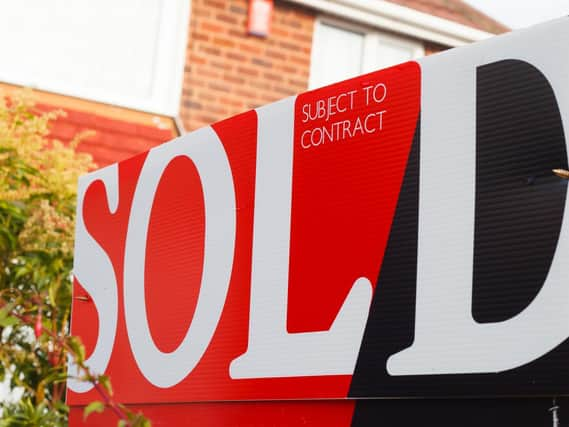Latest on stamp duty changes and the effect on the housing market


The stamp duty holiday announced by chancellor Rishi Sunak a year ago was rocket fuel to what became a remarkably buoyant housing market. Now the holiday is coming to an end for some buyers.
In July last year, the stamp duty threshold in England and Northern Ireland was raised from £125,000 to £500,000, which meant that home buyers paid no stamp duty on the first half a million pounds of the purchase price as long as completion of the deal was by June 30, this year, 2021.
Advertisement
Hide AdAdvertisement
Hide AdFrom July 1, 2021, the stamp duty threshold falls to £250,000 before returning to its pre-pandemic level of £125,000 at the end of September, 2021.
However, the government is giving first–time buyers special treatment in an effort to help those struggling to get onto the property ladder. From July 1 until the end of September, they can purchase homes costing up to £300,000 without paying stamp duty. On the portion between £300,001 and £500,000 the tax is just 5%. You are eligible if you and anyone else you are buying with are first-time buyers. First time buyers purchasing a property over £500,000 don't get any special treatment and pay the full amount of stamp duty.
While many home buyers will mourn the stamp duty tax hike, conveyancers may not. They have been swamped with work and unrealistic demands as the property tax holiday deadline approached.
While the tax break has boosted the property market, its loss won't be catastrophic, according to estate agents, who say that the desire to move home is still strong as more of us seek extra space, gardens and a rural setting.
Advertisement
Hide AdAdvertisement
Hide AdPrices are unlikely to fall as the supply of homes for sale is not keeping pace with demand. Zoopla reports that total stock of homes for sale remains constrained, down 24% in the year to mid-June compared to the average in 2020 and adds that the average house price in the UK has risen by more than £10,000 over the last year, taking it to £229,300.
As a result, 1.8 million homes have been lifted into a higher stamp duty bracket. Zoopla says that some 940,000 additional homes will be subject to a level of stamp duty at 5% should they be purchased by a homemover, while an extra 130,000 properties will attract stamp duty at 10%. The number of properties in the lower stamp duty bands in England is falling, while the price growth means it is rising for the top bands.
The average additional stamp duty payable on homes that have moved up into the 10% stamp duty band will be around £6,100 after the end of the tapered stamp duty holiday in September, while the additional cost for the average homes that has moved up into the 5% band will be around £725.
From October 1, 2021, stamp duty rates for all will be £0-£125,000 = 0%; £125,001-£250,000 = 2%; £250,001-£925,000 = 5%; £925,000-£1,500,000 = 10; £1,500,000+ = 12%